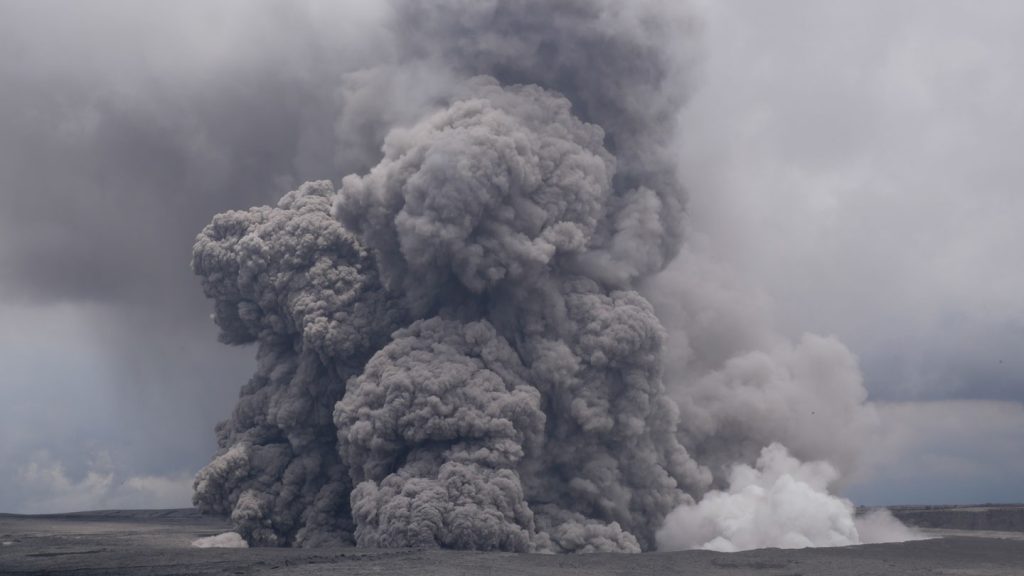A series of explosive eruptions in 2018 from the Hawaiian volcano Kilauea may have been caused by a unique mechanism that resembles the operation of a stomp rocket toy. Hot gas and rock were ejected up to eight kilometers into the sky during this explosive period, triggered by the gradual collapse of the volcano’s summit crater. Unlike traditional explosive eruptions triggered by depressurization of magma or rapid heating of groundwater, these eruptions were distinctive in their repetitive sequence and lack of bubbly magma or superheated water in the erupted material.
Geophysicists theorized that the collapses of the caldera roof at Kilauea were related to the explosive eruptions based on the seismic and infrasound data collected at the volcano. These collapses caused the magma chamber to drain and the overlying rock to become unstable, resulting in a rapid compression of air within the chamber similar to squeezing a stomp rocket’s air bladder. This compressed air caused volcanic debris to shoot upward, resulting in explosive eruptions shortly after each collapse. The series of earthquakes and changes in infrasound frequency recorded by the monitoring systems supported this hypothesis.
The extensive monitoring systems in place at Kilauea, including seismometers, GPS-armed tiltmeters, and infrasound arrays, allowed researchers to track the unique geophysical changes associated with the stomp rocket-style eruptions. By analyzing the relationship between seismic and infrasound data and the eruptive plumes observed at the summit, scientists were able to better understand and characterize this new eruption mechanism. This research also has implications for hazard mitigation at other volcanoes with less monitoring infrastructure, as it can help improve early warning systems based on geophysical data.
The stomp rocket mechanism proposed in this study was observed to be active only in the early stages of Kilauea’s caldera collapse, when the roof was falling directly above the magma body. As the caldera collapse expanded outward, the stomp rocket compression mechanism ceased to be the dominant factor in the eruptions. Over time, the eruptions at the summit of Kilauea diminished as the central caldera vent became obstructed with volcanic material. While this mechanism may not be unique to Kilauea, the volcano’s monitoring capabilities were crucial in detecting and understanding this novel eruption process.
The combination of detailed seismic, infrasound, and visual observations provided valuable insights into the stomp rocket-style eruptions at Kilauea. Understanding the complex interplay between geophysical signals and volcanic behavior can help improve hazard assessments at other volcanoes and contribute to better risk mitigation strategies. By connecting seismic and infrasound data to the behavior of eruptive plumes, researchers hope to refine their models and enhance early warning systems to minimize risks to aviation and nearby communities in the future. This groundbreaking research sheds light on a previously unseen eruption mechanism and highlights the importance of continuous monitoring for volcanic hazard management.


